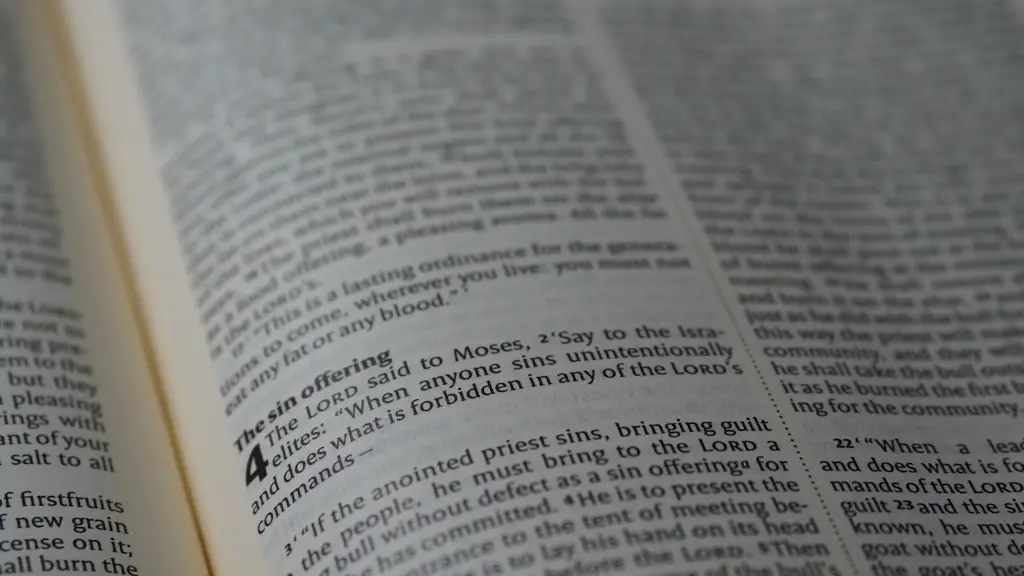Asherah is a complex figure, mentioned several times in the Bible and in other ancient Near East texts. The most frequent reference to her is in the biblical proverb about King Solomon’s wisdom. She is sometimes viewed as a goddess in Canaanite religion and therefore as a threat to monotheism. But who was she and what was her role?
Historians believe that Asherah was an ancient Canaanite goddess worshiped by the Israelites from the 12th century BCE. In some biblical passages, she was the consort of El (or Yahweh), the chief deity of the ancient Israelites, and in other passages she was depicted as a divine mother figure. In the Bible, she is most often referred to as the “Queen of Heaven” or the “Queen Mother.” She is also associated with fertility, sexuality, and healing. In some ceremonies, her priests performed rituals in her honor and conducted sacrifices.
Asherah is described in the Bible as a foreign deity, as a foreign female consort of Yahweh and as the mother goddess of the Canaanite pantheon. In the case of the latter, she appears alongside other petty gods such as Baal, Moloch, and Dagon. But the Bible does not give her any credit for being influential. She merely appears as a brief figure in the bible, and her true power, influence, or purpose is never discussed.
Today, many scholars distance themselves from speculating that Asherah was a goddess. They point out that the ancient Israelites were a monotheistic society and so the notion of a competing goddess must have been nonexistent, a foreign import that they did not accept. Furthermore, they suggest that the term “Queen of Heaven” was used to denote a supreme deity, a dispenser of fertility who gave gifts of rain and wealth to her worshipers.
Artifacts have been discovered that depict figures of Asherah, such as figurines, pottery, and altars. These artifacts were found at archaeological sites across the Near East and reveal her connection to fertility, sexuality, and healing. Additionally, some artifacts depict Asherah in the form of a tree, perhaps hinting at her role of providing divine nourishment and protection. This symbol of the tree has often been interpreted to mean that she was responsible for plant life and for providing sustenance.
At one point, Asherah became the object of worship in Israel, though this was strictly frowned upon in the Hebrew Bible. In the Book of Jeremiah, the prophet criticizes the Israelites for turning to Asherah and making her idols. In this passage, she is associated with paganism and evil. Archaeological evidence has confirmed that Asherah was in fact worshiped in some parts of Israel during the Iron Age. But this worshipping of her was short-lived and by the time of the Babylonian Exile (6th century BCE), her worship had ceased entirely.
Worship Practices
The worship of Asherah was often conducted in sacred groves or at a home shrine. In the Book of Kings, there are several references to Asherah poles erected near high places that were likely associated with her worship. Artifacts from ancient Near Eastern sites have revealed images of Asherah standing on a mountain, holding two lions in her hands. This type of imagery may have been used for her religious rituals.
It is believed that Asherah’s priests would have offered sacrifices and libations in her temples or shrines. The biblical prohibition against these practices also revealed Asherah’s presence as an object of worship. Idolatry was strictly forbidden and images associated with her were destroyed, suggesting her continued presence in the cults of ancient Israel.
Role in Judaism
Today, Asherah is associated with both Judaic and Christian traditions. She has been viewed as a symbol of motherhood, fertility and life. In Judaism, she is often mentioned along with other mother goddesses such as Lilith and Ishtar, yet her role is much more ambiguously defined. In some Jewish traditions, she is considered to be the consort of El, the highest God of the Israelites.
In the 18th century, the Zohar (an important text in the Jewish Kabbalistic tradition) referred to Asherah as the queen of the tree of life. This can perhaps be seen in the various references to her as “mother” or “queen” in the Bible. Here, she may represent the nurturing aspect of the divine, a feminine counterpart who balances El’s male attributes.
Though there are many interpretations of Asherah’s role in the Bible, there is little debate that she had a visible presence in ancient Canaanite religion. Her worship was condemned and opposed by the Hebrews, yet she continued to be venerated in some parts of the ancient world. Today, she is remembered as an enigmatic figure and her presence in the Bible is often seen as a reminder of the polytheistic beliefs of ancient cultures.
References in Art and Literature
Asherah has been depicted in art and literature throughout the ages. She appears in many biblical manuscripts and plays an important role in some ancient Canaanite rituals. She has appeared in plays, operas and literature throughout the centuries, often as a symbol of religious devotion or divine feminine power. By looking at her various representations in works of art and literature, historians can gain a better understanding of how she was seen and interpreted by different cultures.
Artists have also brought their own spin to her story. For example, in Rubens’ painting, The Queen of Sheba Visiting King Solomon, Asherah is represented as a symbol of wisdom and beauty. Other modern depictions of her include her being seen as a powerful goddess or a divine warrior. Whatever the interpretation, it has become clear that Asherah has a powerful presence in modern culture.
Conclusion
Asherah is an enigmatic figure in the Bible, but her presence has been seen throughout ancient and modern cultures. She has been depicted in art and literature and linked to symbols of motherhood, fertility, and divine feminine power. Scholars are divided over her role in the Bible, with some believing she was a foreign deity never accepted in the Hebrew religion and others believing she was a symbol of divine goodness and grace. Nevertheless, Asherah remains an important figure in mythology and her story remains a source of intrigue and fascination for many.



